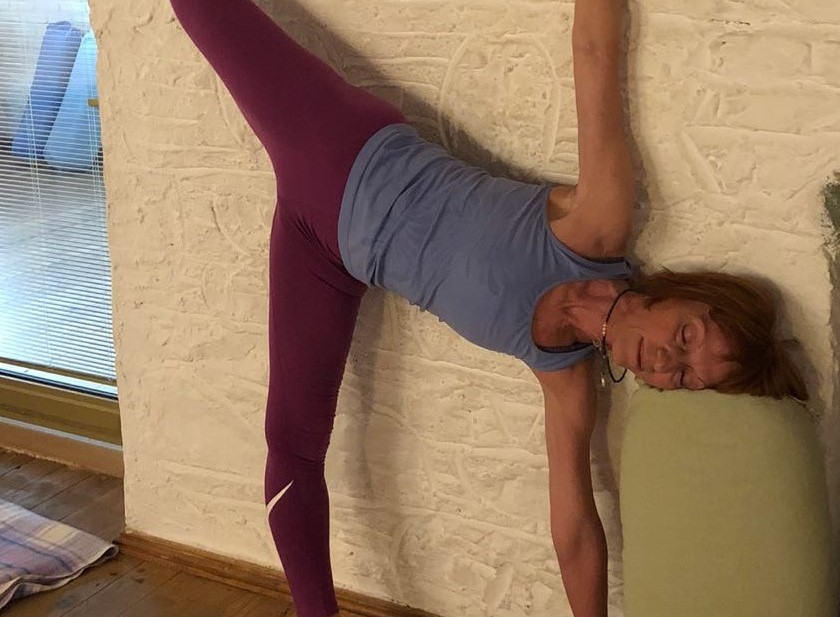Practicing a standing pose and resting your head at the same time can be a rewarding experience. Standing poses activate your bodily systems and resting your head helps to let go mentally. Both done at the same time can be quite uplifting. You literally are practicing hatha yoga when combining the dualistic aspects of sun and moon, effort and effortlessness, yin and yang, sympathetic and parasympathetic in the present moment.
Supporting your forehead calms the mind. In this area of the brain, called frontal cortex, we plan and can think abstractly. It feels good to give it a rest.
